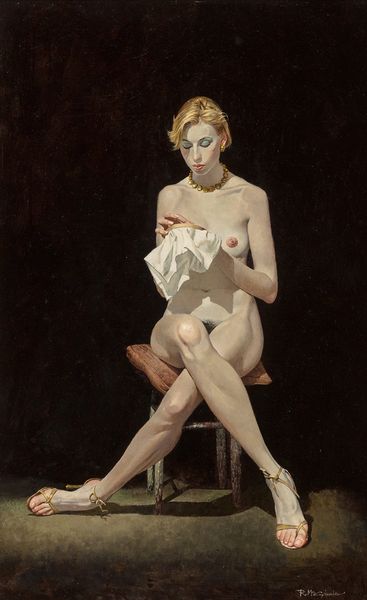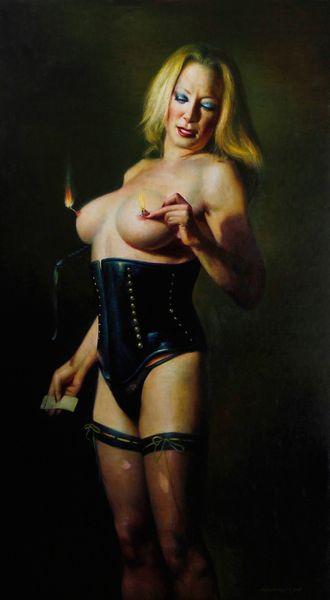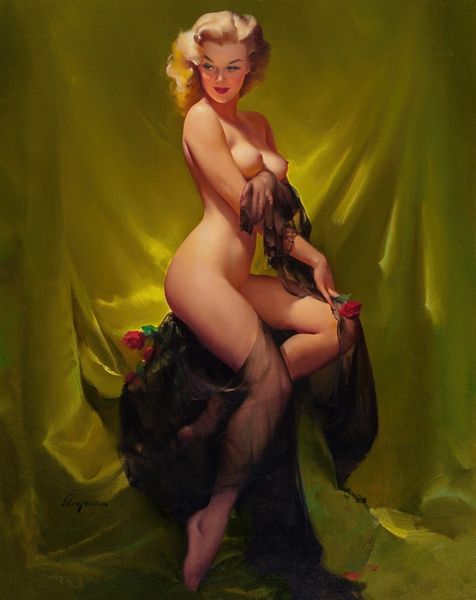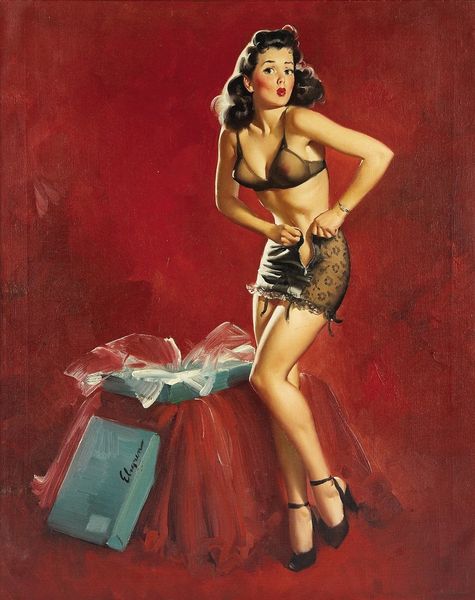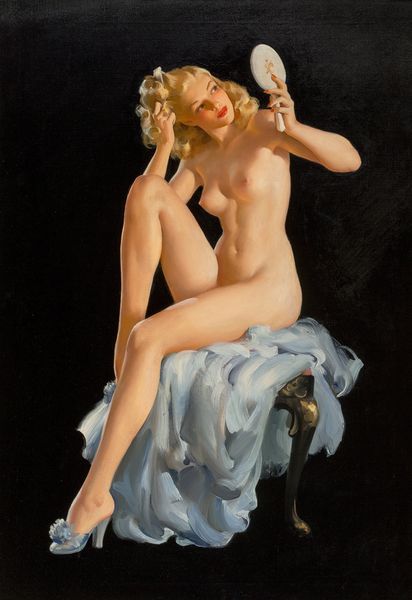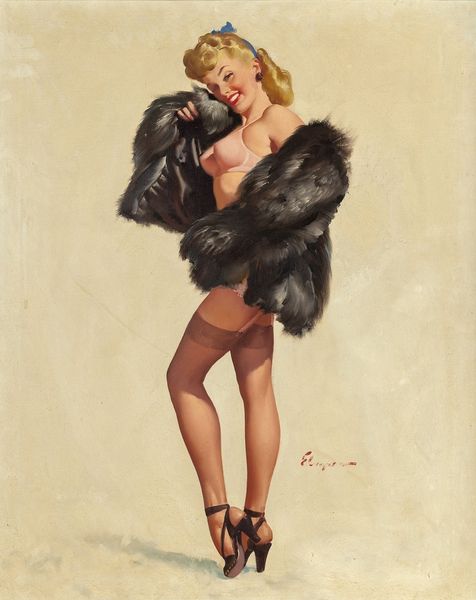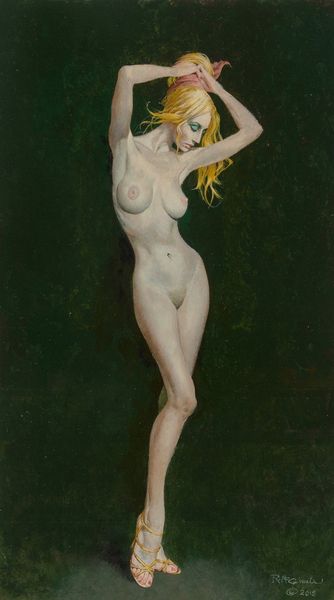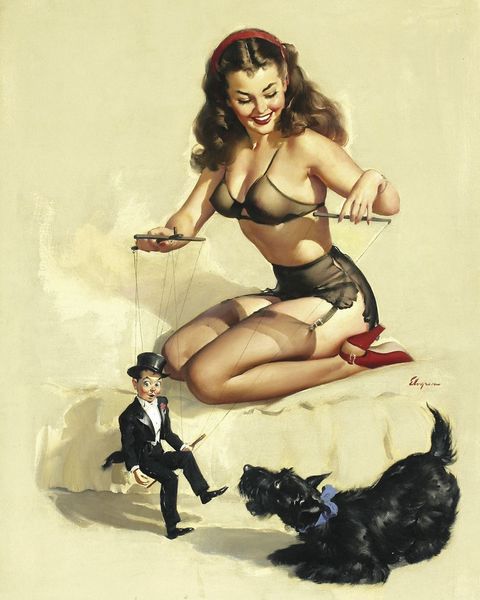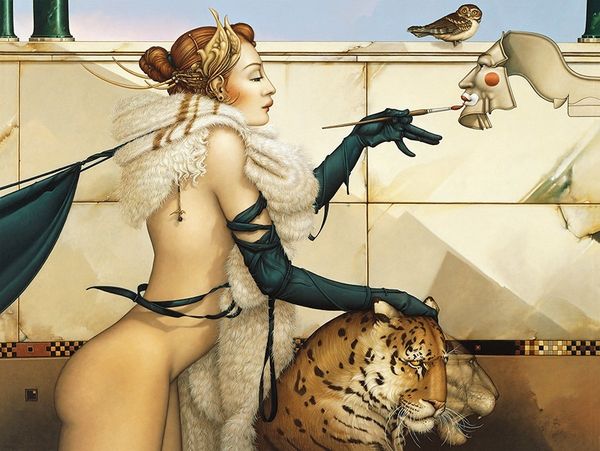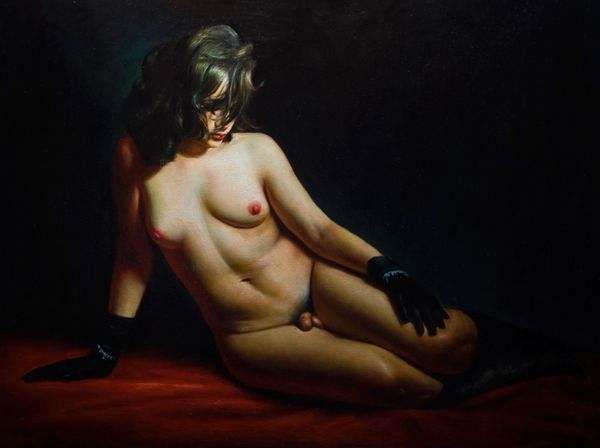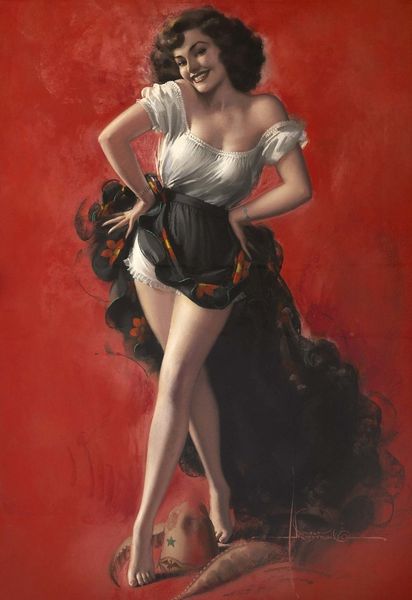
Copyright: Modern Artists: Artvee
Curator: Here we have Gil Elvgren's "Fascination," painted in 1952. A classic example of mid-century pin-up art, rendered with a keen eye for detail. Editor: My immediate response is the soft lighting—it bathes the figure and the setting in a warm, almost dreamlike quality. The texture of the lace seems particularly tactile. Curator: Indeed. Elvgren's work, though often dismissed, speaks volumes about the era's evolving conceptions of femininity and desire. The woman is presented as both sensual and somewhat demure, gazing downward at the pearls. Consider this alongside the booming postwar economy—she's adorning herself with freshly obtained materials, a direct manifestation of prosperity through the female form. Editor: I’m struck by how the artist’s focus on capturing the light on skin and fabric—almost obsessive—highlights the labor involved. Elvgren's dedication to illustrating the textures, from the smoothness of her skin to the intricate detail of the lace—not to mention those pearl necklaces—speaks to a desire to create luxury, a tangible artifact of desire itself. He is carefully attending to the interplay of manufactured goods and beauty, revealing societal aspirations during a pivotal historical period. Curator: Absolutely. This interplay underscores how beauty standards were actively shaped and commercialized. It also taps into broader discussions of beauty and societal expectations of women in post-war America. Editor: I see it more as an intersection of manufacture and fantasy. Think about the materials: the pigment he mixed, the canvas he prepped, the synthetic lace, all assembled by unseen hands. Curator: I see your point. Her pose, almost caught in a private moment, is incredibly constructed. I think understanding its mass appeal, which perpetuated unattainable ideals, helps to explore feminist theory today. Editor: Ultimately, I come back to the artist and those hidden processes. The creation of the ideal, available for mass consumption—it is less a celebration of womanhood and more of an example of production, manufacturing an image for the male gaze. Curator: Agreed. The painting, and works like it, opens a fascinating and troubling lens onto broader socio-political discourse and historical understandings of beauty. Editor: Precisely. Analyzing art, its materials, and production is critical, not just to understanding its appeal, but to deconstructing our present relationship with visual culture.
Comments
No comments
Be the first to comment and join the conversation on the ultimate creative platform.

